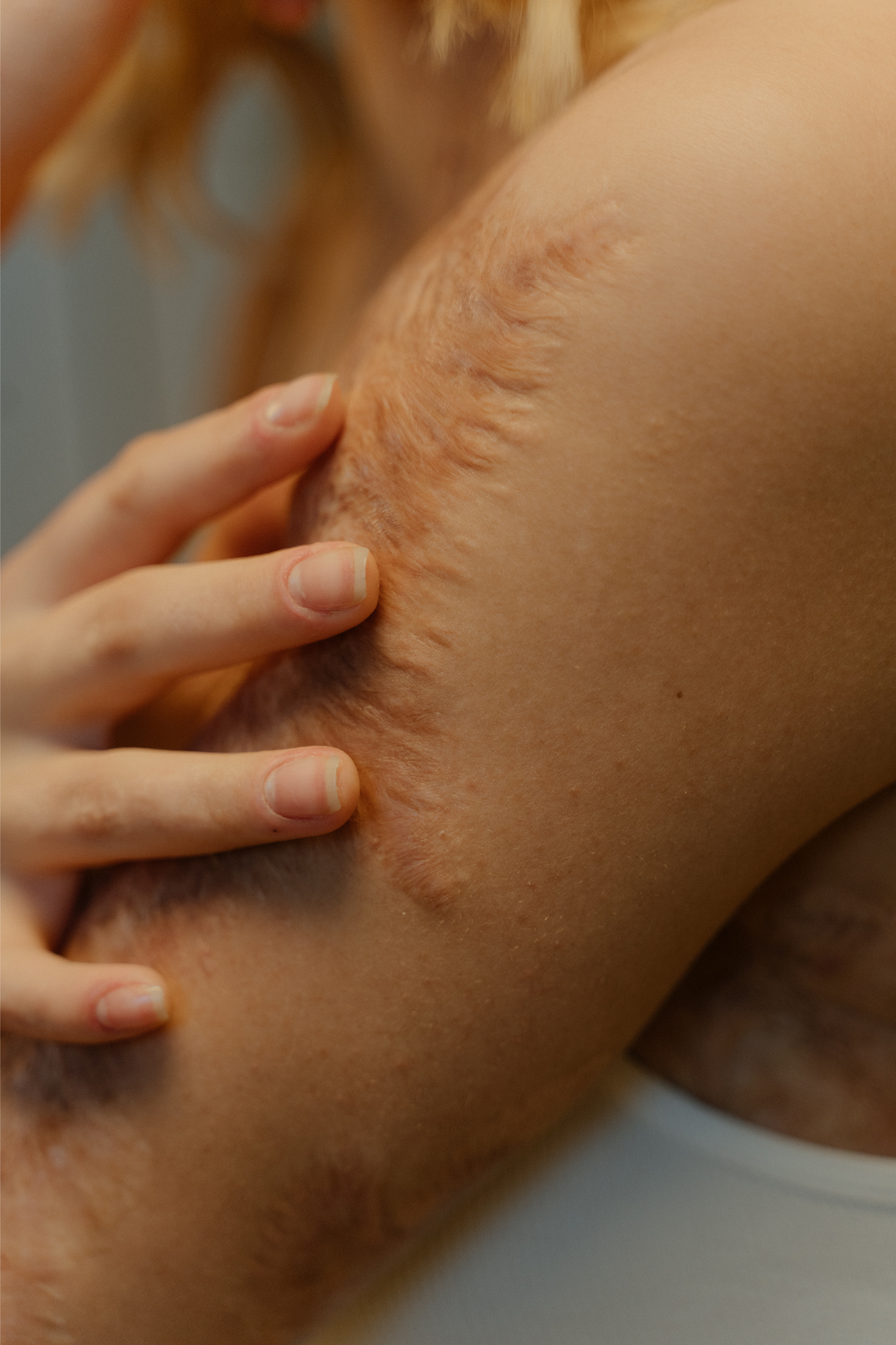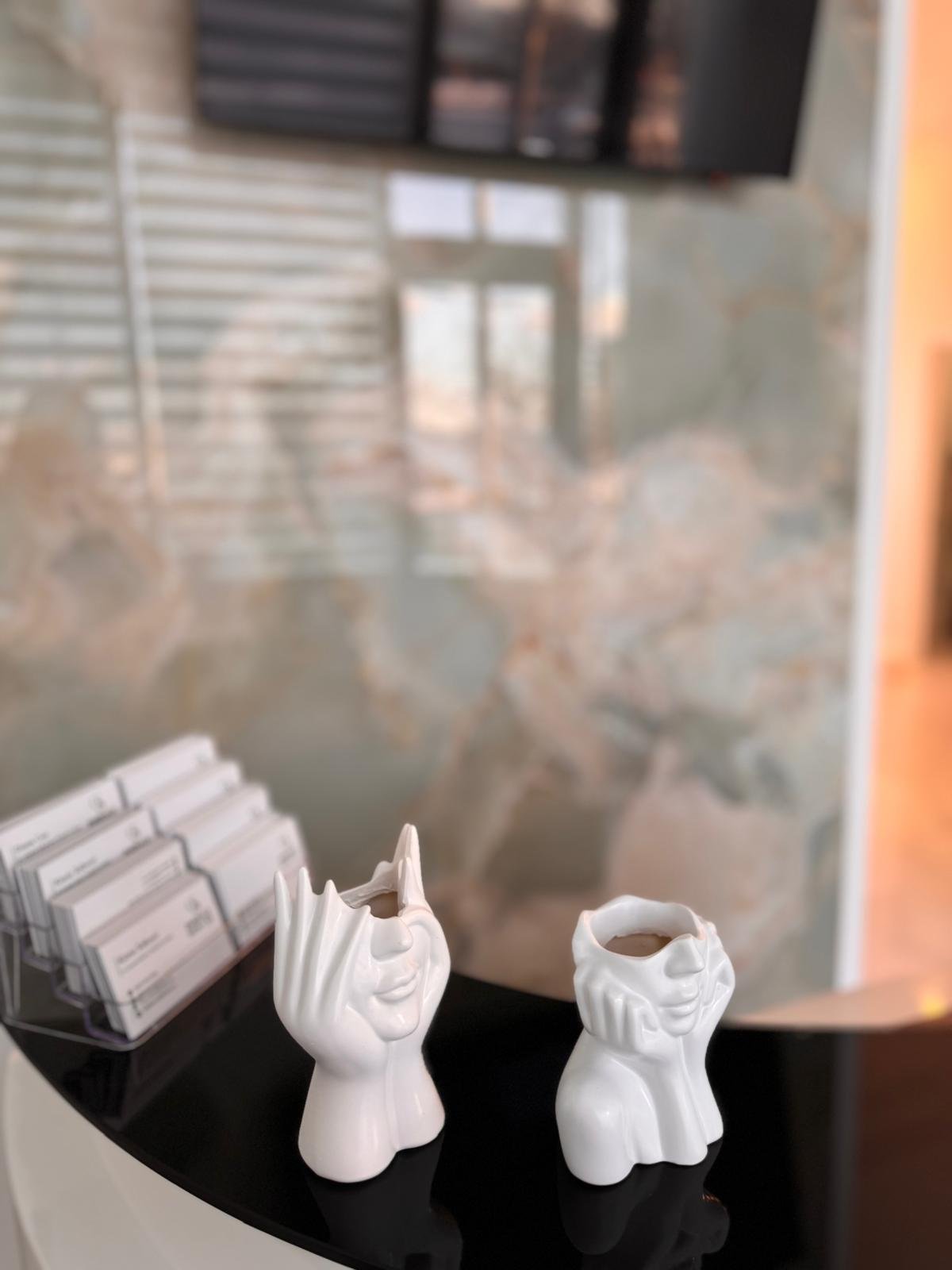
Professional Scar Treatments in Toronto
Effective Scar Treatment Solutions:
Transform Your Skin with Expert Care at Emerald Skin Lab
Following skin traumas such as burns, injuries, severe acne or surgeries, the skin regenerates itself to protect against infections and then closes and heals the damaged area. Healthy cells migrate to the wound and then multiply to complete the healing process. The latter can cause hyperkeratinization – the abnormal multiplication of epidermal cells, which results in a texture that is different from the rest of the skin.
What is this?
-

Atrophic scars
Characterized by the formation of an indentation caused by a lack of dermis.
-

Hypertrophic scars
A keloid is a common hypertrophic scar that forms a small raised relief through a thicker dermis at the lesion site.
-

Pigmented Scars
Pigmented scars arise from dermal protrusion and discoloration.
-

Depigmented scars
Which are lighter in colour than the natural pigmentation.
“Healing is possible thanks to the action of collagen, a protein known for its effects on the firmness and elasticity of young and healthy skin! Collagen reunites the skin fibres to promote the healing process.”
Did You Know?
Immune System
Following skin traumas such as burns, injuries, severe acne or surgeries, the skin regenerates itself to protect against infections and then closes and heals the damaged area. Healthy cells migrate to the wound and then multiply to complete the healing process. The latter can cause hyperkeratinization – the abnormal multiplication of epidermal cells, which results in a texture that is different from the rest of the skin.
What are the Causes?
Lifestyle
Diet, physical activity, stress management, alcohol and tobacco consumption, as well as environmental aggressors such as cold and sun are all factors that influence healing. Lifestyle can have an impact on collagen production and skin cell multiplication, which in turn can slow down healing making scars more noticeable in individuals with unbalanced diets and sedentary and/or stressful lifestyles
Age
Over time, cells multiply and regenerate less quickly and collagen production slows down. This explains why children’s scars form quickly and why those of adults and older people form more slowly and tend to remain more apparent, which can lead to weaker scars and slower wound closure.
Skin Type
Skin type is an important determinant of how the scars heal. Darker skin types (IV and up) are more likely to heal with hypertrophic scars or keloids. Areas where there is a lot of movement such as around joints can result in a worse looking scar due to constant stretching of the scar. Hypertrophic scars are excess scar tissue within the boundary of the original scar, whereas keloid scars are excess scar tissue that goes beyond the original scar.
-
In order to stimulate the healing process, the wound must first be properly cared for. This includes cleaning, disinfection, moisturization and the application of sterile dressings chosen according to the cause and severity of the lesion: healing should not be left to chance.
-
The new skin created by the healing process is thinner and younger than on the rest of the body; it is therefore more sensitive to the harmful effects of the sun. In order to reduce the appearance of the scar, it is essential to protect it from UVA and UVB rays by applying an appropriate sunscreen and covering it as much as possible until it heals completely.
Prevention
Fractional lasers
Fractional Laser Resurfacing improves texture, spots and fine lines. This very safe procedure causes micro-perforations in the dermis which in turn stimulate the skin to repair them by producing new collagen and building a new skin structure. The new skin formed combines with existing skin to reduce the appearance of scars, whether caused by acne, injury, aging or surgery.
How to Treat

QUESTIONS?
Call 647-354-2026
Products
FAQs
-
The cost of scar treatments varies based on the method, ranging from $200 per session for chemical peels to $2,000 for advanced Fractional Laser therapy. Professional consultations determine the best scar removal treatment and accurate pricing.
-
The best treatment for scars depends on the scar type. Options include Fractional Laser therapy for deep scars, microneedling to stimulate collagen, chemical peels for discoloration, and dermal fillers for indentations, all offering effective scar reduction.
-
Scar revision treatments are typically well-tolerated, with minimal discomfort. Procedures like laser therapy or microneedling may cause mild stinging or tingling, while surgical scar revision uses local anesthesia to minimize pain during the process.
-
Scars form when the skin heals from injuries such as acne, cuts, burns, surgery, or other traumas. They occur due to excess or insufficient collagen production during the healing process, leading to raised, indented, or discolored marks.
Scar Removal Treatment Near Me in Toronto & the GTA
At Emerald Skin Lab, we offer the best scar removal treatment in Toronto, using advanced non-surgical scar treatments to fade scars, smooth skin texture, and improve skin clarity. Our scar reduction treatments, including laser scar removal, microneedling, chemical peels, steroid injections for scars, and medical-grade skincare, help stimulate collagen production, reduce hyperpigmentation, and minimize acne scars, surgical scars, injury scars, and keloid scars for long-lasting results. Whether you're looking for laser treatment for scars, acne scar removal, keloid scar treatment, or skin resurfacing for scars, our customized approach ensures safe and effective scar revision. We have successfully treated thousands of clients across Toronto, Mississauga, Thornhill, North York, Scarborough, Brampton, Etobicoke, Markham, Richmond Hill, Woodbridge, Vaughan, Newmarket, and other areas in the GTA. If you're searching for the best scar removal treatment near me, book your consultation today and achieve smoother, clearer skin!




